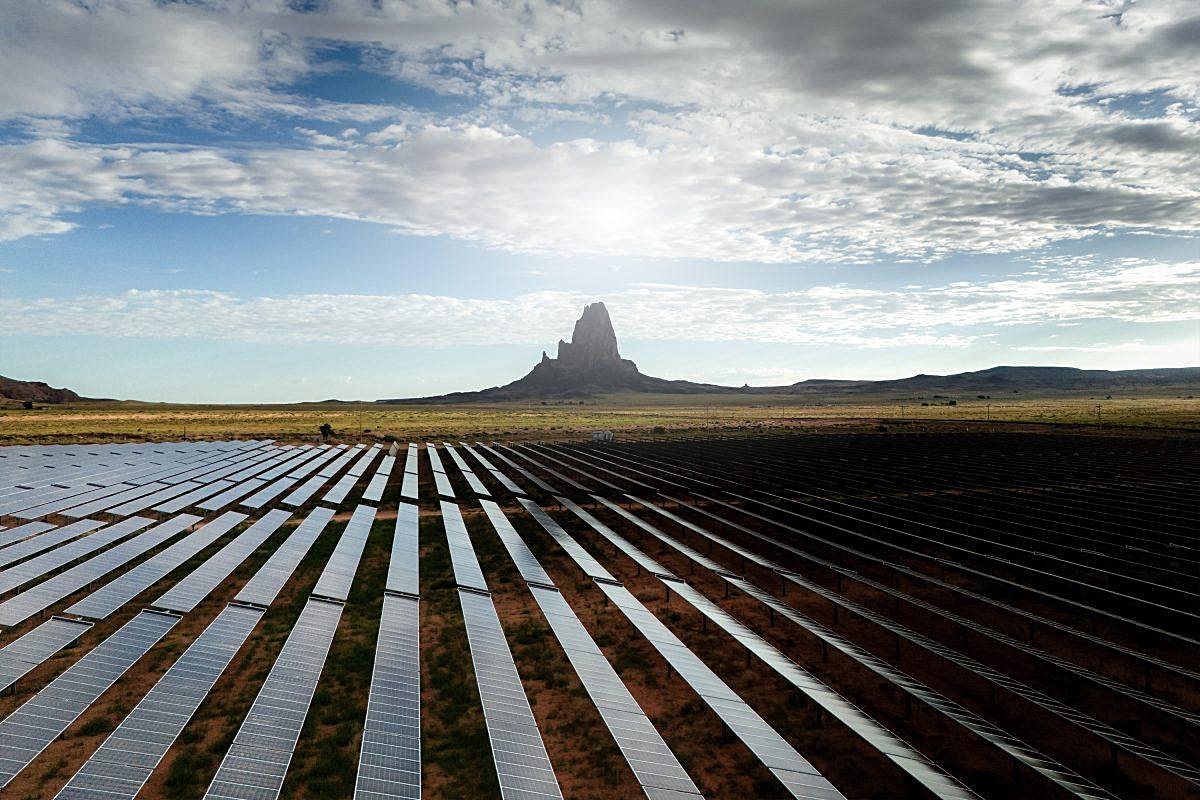The solar energy industry in the United States, valued at $60 billion, is set to experience rapid growth over the next decade. However, American manufacturers face challenges in competing with low-cost imports of photovoltaic (PV) cells from Southeast Asian factories, most of which are owned by subsidized Chinese corporations.
The U.S. solar industry has been adapting to import competition, as evidenced by increased actual and planned module production, announcements of domestic cell production, and improvements in various financial, trade, and employment indicators, according to President Biden.
This action was taken in response to a petition filed by seven domestic solar manufacturers in April, along with a report from the U.S. International Trade Commission (USITC) in May, which cited unfair trade practices and market manipulation by Chinese companies. These companies were bypassing U.S. tariffs by exporting solar panels and components manufactured in Cambodia, Malaysia, Thailand, and Vietnam.
While the tariff rate quota increase will provide certainty to domestic manufacturers, there are concerns that it may lead to higher prices for solar panels, potentially hindering the predicted doubling of industry-related U.S. jobs to nearly 600,000 by 2032, compared to the current 260,000, as projected by the Solar Energy Industries Association (SEIA).
The decision was welcomed by SEIA, the national trade association for the U.S. solar industry, as it will help establish a strong and stable module manufacturing sector that can support robust cell production in the long term.
Several organizations, including the American Clean Power Association, Interstate Renewable Energy Coalition (IREC), The Institute for Energy Research (IER), Coalition for a Prosperous America, and American Alliance for Solar Manufacturing Trade Committee, either did not respond to inquiries or declined to comment until later this week.
The American manufacturing trade committee, based in Washington, consists of representatives from seven leading U.S.-based solar manufacturers: Convalt Energy, First Solar, Meyer Burger, Mission Solar, Qcells, REC Silicon, and Swift Solar. They filed the petition with the U.S. Department of Commerce (DOC) in April.
Some members of the committee advocated for increasing the quota to 20 GW or eliminating it entirely, arguing that the growing demand for solar would make them sustainable without tariffs in the long run.
First Solar, one of the committee members, refrained from commenting on the tariff rate quota increase but mentioned plans to address other issues within the global solar market soon.
Under the tariff rate quota implemented by the Biden administration, effective from August 1, U.S. manufacturers can now import up to 12.5 GW of solar cells annually before being subject to a 14.25% tariff.
The tariff rate quota was initially set at 2.5 GW in 2018 during the Trump administration and was increased to 5 GW in 2021 by President Biden.
Studies suggest that energy costs constitute approximately 40% of the total cost of solar panels.
In a letter, the petitioners highlighted that the manufacturing cost of a solar panel in China had dropped to 15 cents per watt in 2023, which is more than 60% lower than in the United States.
They expressed concern that China’s increasing manufacturing capacity, projected to meet global demand for the next ten years by 2026, poses significant challenges to the U.S. solar industry and American energy security. They called for the administration to send a clear message that the United States will not be a dumping ground for foreign solar products, as it has resulted in an oversupply of solar panels being sold below production costs.
The U.S. tariff situation in the solar industry is more complex than it seems, according to Paula Mints, founder of San Francisco-based SPV Market Research. She highlighted how the growing U.S. solar market is attracting global investors, including those from China. In fact, at least seven China-based companies with domestic subsidiaries have established or are establishing solar manufacturing plants in the United States. Mints emphasized that the question of tariff rate quotas should be relevant to all these companies, not just the Chinese manufacturers. Additionally, she noted that South Korea’s Hanwha, Switzerland’s Meyer Burger, and Singapore’s Maxeon are among the foreign companies also building solar manufacturing plants in the U.S.
Critics, such as financial adviser Peter Schiff, express concerns that protectionist policies aimed at promoting domestic solar manufacturing by the Biden administration may lead to higher solar panel prices, reducing affordability and suppressing demand. Schiff highlighted that the imposition of heavy tariffs on imported solar panels by the Biden administration made the installation of solar panels uneconomical for customers, resulting in a collapse in demand. This has had a negative impact on companies like SunPower, a prominent player in U.S. solar energy development, which filed for bankruptcy on August 5. While SunPower attributed its struggles to various factors, including interest rates and net metering changes in California, critics argue that the administration’s actions did not make them more competitive. The higher cost of solar panels, exacerbated by tariffs, was a major contributing factor to their decline.
In terms of future prospects, Mints predicts that tariffs on imported solar cells, modules, polysilicon, and wafers will continue to be part of the U.S. solar landscape, regardless of the 2024 presidential election outcome. Although former President Trump generally preferred imposing tariffs more broadly than President Biden or Vice President Kamala Harris, it is unlikely that solar tariff rate quotas will become a focal point of the campaign, Mints added.
Discover more from Tension News
Subscribe to get the latest posts sent to your email.

